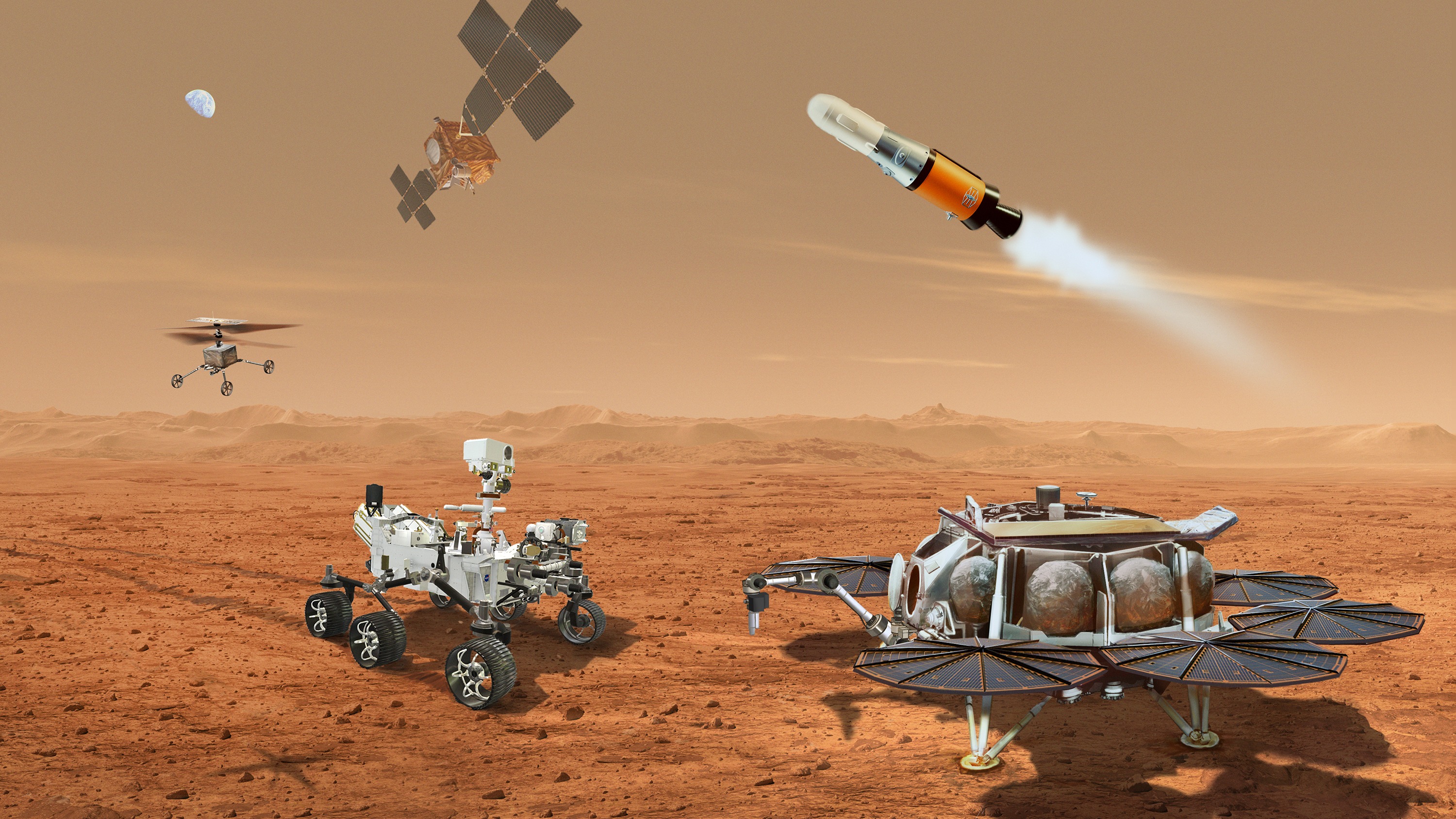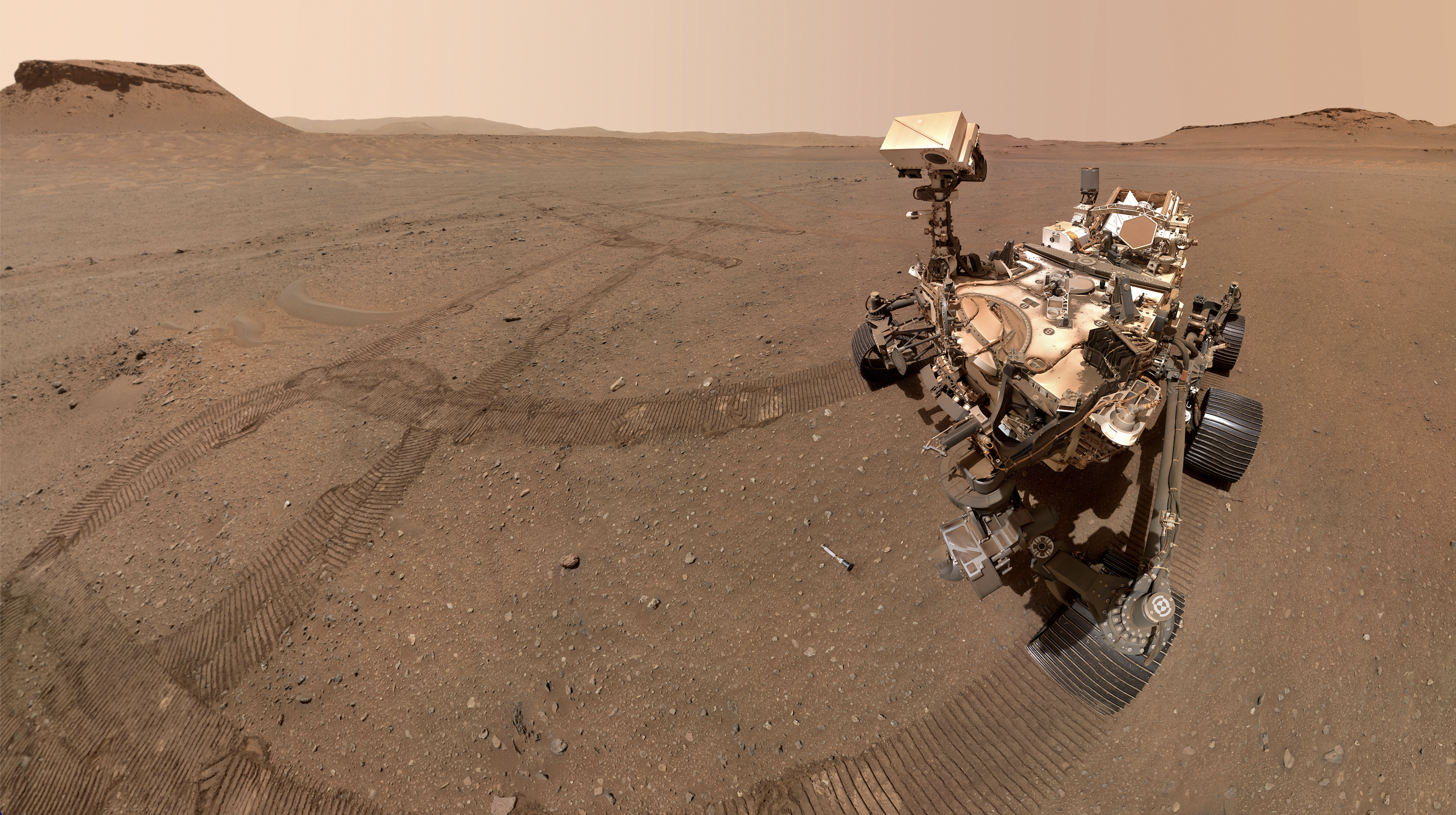Will NASA be able to return Mars samples to Earth? New audit raises doubts
Complexity, cost and scheduling are major issues, and MSR is shrouded in doubt.

NASA's bold plan to get pristine samples of Mars to Earth for analysis is facing major challenges, according to a new report.
Design, cost and scheduling are all significant obstacles, an audit report of NASA's Mars Sample Return (MSR) Program by the agency's Office of Inspector General (OIG) finds.
MSR aims to return Martian geological samples to Earth for scientific study. It involves landing on Mars to collect samples taken by the Perseverance rover and launching those samples to rendezvous with an orbiter, which will haul them to Earth.
Related: NASA's Mars Sample Return in jeopardy after US Senate questions budget
Perseverance is already on Mars, snagging and storing samples. But the program still needs to build a Sample Retrieval Lander (SRL) and an Earth Return Orbiter (ERO), the latter being developed and funded by the European Space Agency (ESA). MSR is one of the most technically complex, operationally demanding and ambitious robotic science missions ever undertaken by NASA, according to the OIG report.
The report notes design, architecture and schedule issues with the Capture Containment and Return System (CCRS). These design issues resulted in adding about $200 million to the budget and one year of lost schedule.
One major area of concern is life-cycle cost estimates for MSR. There is concern that, due to the number and significance of cost increase indicators so far, the $7.4 billion estimate is "premature and may be insufficient," the report finds. Now, the complexity of the MSR mission could drive costs to between $8 billion to $11 billion, the OIG report notes, citing a September 2023 Independent Review Board (IRB) report. Notably, a July 2020 estimate listed costs of $2.5 to $3 billion.
Get the Space.com Newsletter
Breaking space news, the latest updates on rocket launches, skywatching events and more!
These new figures indicate significant financial challenges and uncertainties in the MSR Program's life-cycle costs. Issues include inflation, supply chain problems and increases in funding requests for specific program components.
The report also highlights the need for enhanced coordination between NASA and ESA. The OIG report offers recommendations to address these challenges. These include ensuring a stable CCRS design, incorporating program complexity into cost and schedule estimates (rather than focusing only on external factors), and reassessing large mission pre-formulation guidance.
In a bigger-picture recommendation, the OIG report calls for NASA to "develop a corrective action plan that incorporates the lessons learned and recommendations from the Large Mission Study [completed in 2020] to improve the guidance and practices for pre-formulation of large missions."
NASA management concurred or partially concurred in its responses to the report.

The MSR program has recently come under political pressure for its ever-expanding cost estimates, adding to doubt over the continuation of the program. NASA is currently reassessing the overall MSR architecture and its budget. The results could be released later this month.
NASA is also operating under a continuing resolution that freezes spending at 2023 budgetary limits until the spending for the new fiscal year is agreed upon by Congress. This has seen NASA's Jet Propulsion Laboratory in Southern California, the main player in MSR, to lay off workers, further impacting the program.
MSR is, however, considered a mission of major scientific significance by many planetary scientists. China, meanwhile, is working on its own mission, Tianwen-3, to collect samples from Mars, launching around the end of the decade.
Join our Space Forums to keep talking space on the latest missions, night sky and more! And if you have a news tip, correction or comment, let us know at: community@space.com.

Andrew is a freelance space journalist with a focus on reporting on China's rapidly growing space sector. He began writing for Space.com in 2019 and writes for SpaceNews, IEEE Spectrum, National Geographic, Sky & Telescope, New Scientist and others. Andrew first caught the space bug when, as a youngster, he saw Voyager images of other worlds in our solar system for the first time. Away from space, Andrew enjoys trail running in the forests of Finland. You can follow him on Twitter @AJ_FI.
-
steve_foston I have a suggestion - why not open this mission up to commercial space based companies participation through a fixed price contract rather than trying to develop the mission in-house by NASA? Maybe SpaceX or Blue Origin can do it cheaperReply -
billslugg Fixed price contracts on developmental works are folly. You can't price or schedule development. That's why they call it development. Fixed price contracts with the Government are a sure road to bankruptcy. NASA will change the requirements and micromanage you into the dirt. Not one person at NASA has their fortune tied up in the project. No one will lose a dime if any project fails. They just blame it on the other guy and take the same paycheck.Reply









